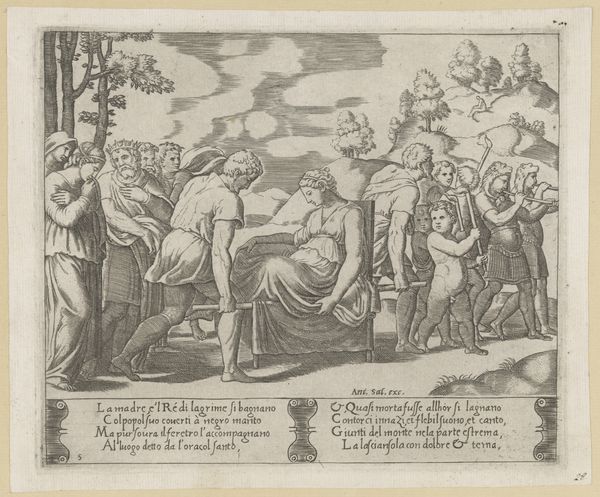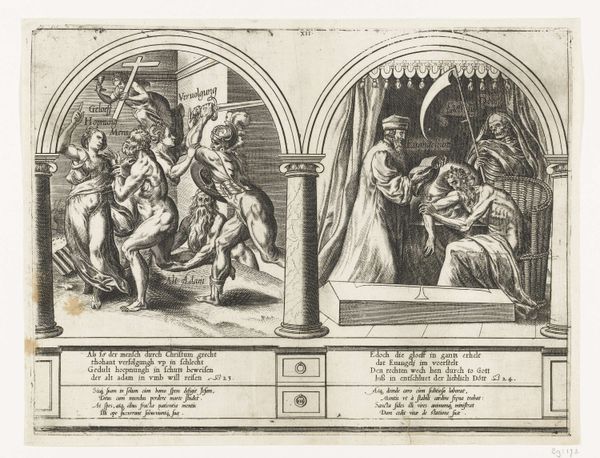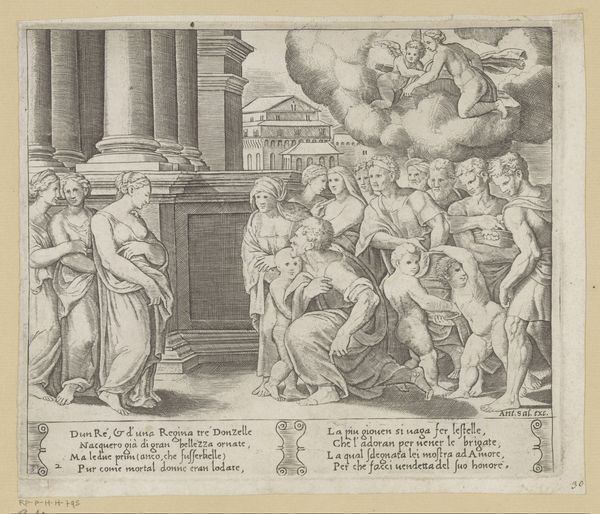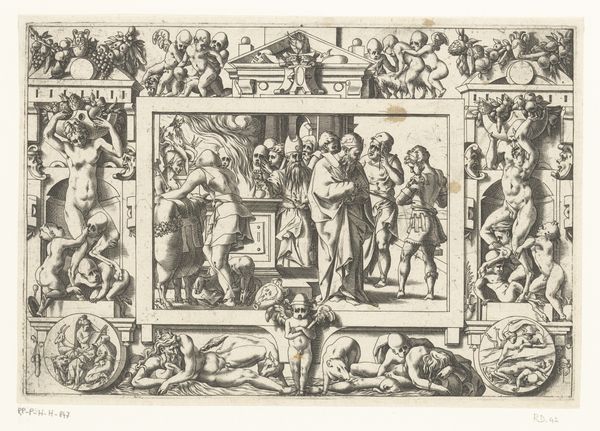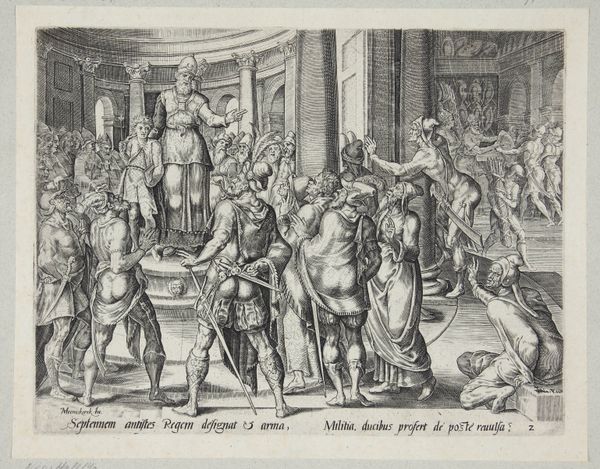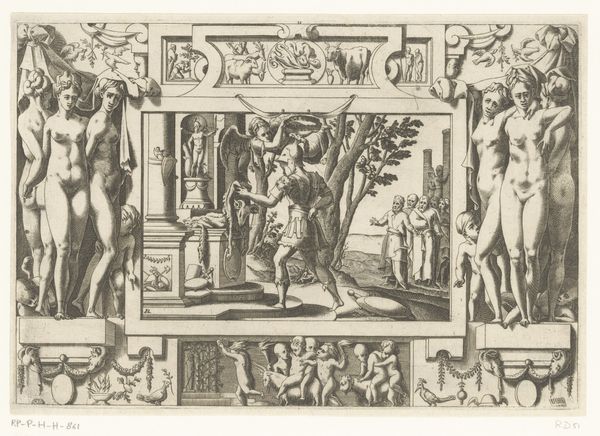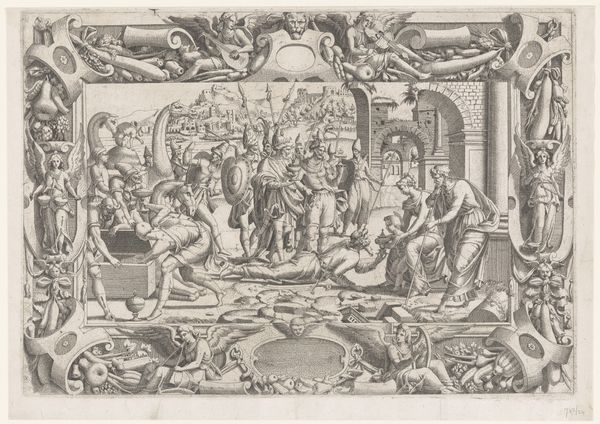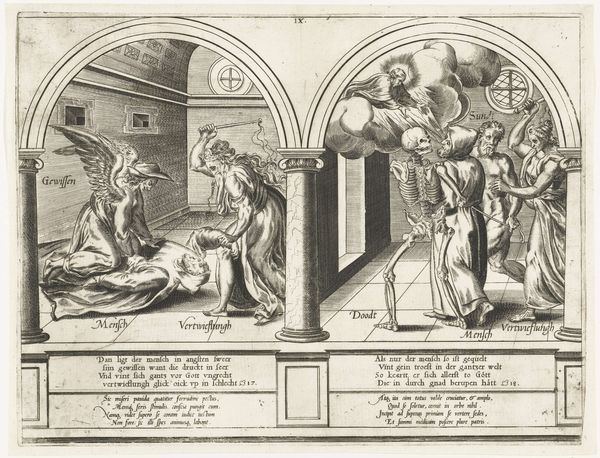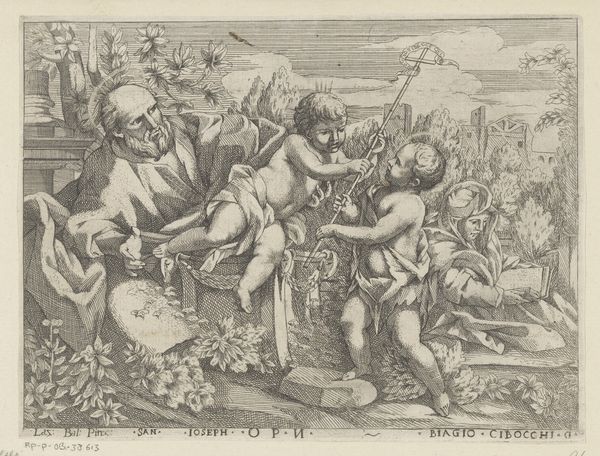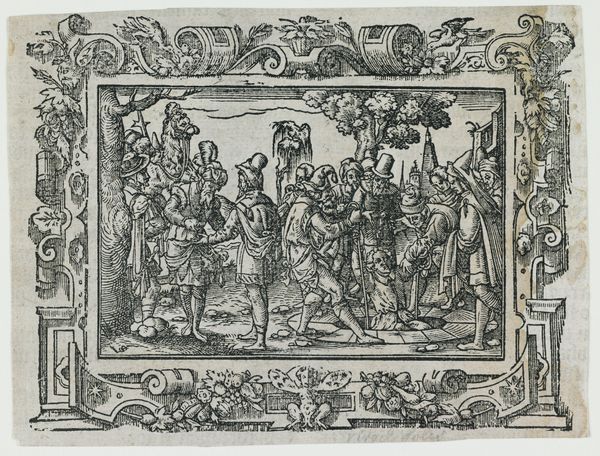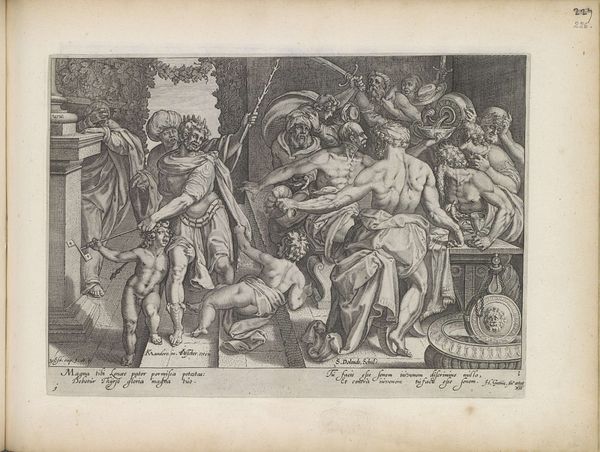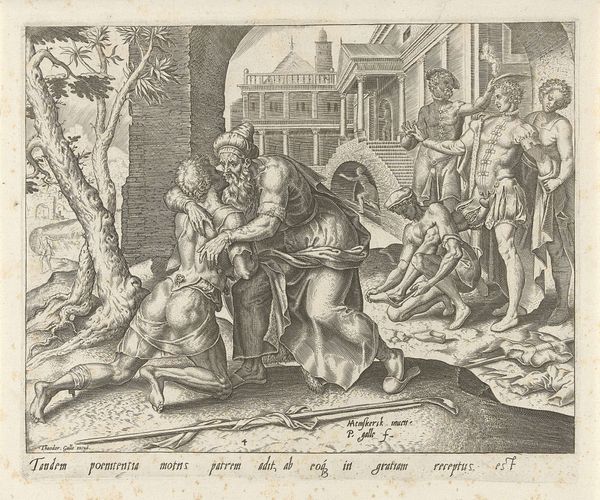
print, intaglio, engraving
#
allegory
# print
#
intaglio
#
old engraving style
#
figuration
#
11_renaissance
#
group-portraits
#
history-painting
#
italian-renaissance
#
nude
#
engraving
Dimensions: height 163 mm, width 290 mm
Copyright: Rijks Museum: Open Domain
Editor: This intaglio print, "Offer aan Priapus" by Meester van de Dobbelsteen, dating back to about 1530-1560, depicts a bustling scene of figures surrounding a statue. The details are really impressive given its age, but it definitely gives off some…intense vibes, I guess. How do you interpret this work? Curator: Intense is definitely one word for it! Think about what it meant to depict such a scene, one that embraces sexuality and pagan ritual, during the Renaissance. This wasn't just about aesthetics, but a statement. What sociopolitical tensions might be bubbling beneath the surface of what appears to be simple revelry? Editor: So, it's like a pushback against the stricter moral codes of the time, or maybe a revisiting of older traditions? Curator: Precisely. Renaissance artists and thinkers were often wrestling with the complex relationship between classical antiquity and contemporary Christian values. The figure of Priapus, with his prominent erection, embodies fertility and abundance, but also challenges established norms. How does the artistic style and the presence of these inscriptions contribute to understanding the context? Editor: Hmm, so these verses kind of contextualize it, giving cues to read beyond a purely literal interpretation of an erotic scene and consider, maybe, a cultural commentary, perhaps? Curator: Yes! It's a deliberate and intellectual act of contextualizing. These visual and textual elements combined act as social commentary through their interplay. This also speaks to an audience that’s literate, wealthy and likely, part of a humanist circle invested in classical learning. Editor: I see now. It's not just about a party scene; it’s about power, knowledge, and cultural identity at a really fascinating moment in history. I didn't think about it as cultural commentary. Thanks. Curator: Exactly! Now we can appreciate that art and its criticism, at their core, is inherently about social responsibility.
Comments
No comments
Be the first to comment and join the conversation on the ultimate creative platform.
